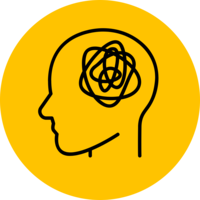Blue Mountains Cohort Study (BMCS)
The BMCS comprises the Blue Mountains Eye Study (BMES) and the Blue Mountains Hearing Study (BMHS). BMES was the first large population-based assessment of visual impairment and common eye diseases of a representative older Australian community sample. The project was conducted in an area of New South Wales that included Katoomba, Leura, Medlow Bath, and Wentworth Falls. Starting in 1992, over 3,500 residents aged between 49 and 97 years were examined between 1992 and 1994. Participants in the 2nd sweep of the BMES were invited to participate in the BMHS in 1997. Over 2,900 participants completed the BMHS data collection. The population has been followed up for 15 years, with the most recent sweep (BMES-IV) including over 1,100 participants (56% of survivors), who were re-examined from 2007 to 2009.
Study design
Cohort
Number of participants at first data collection
3,654 (participants)
Age at first data collection
≥ 49 years (participants)
Participant year of birth
Varied (participants)
Participant sex
All
Representative sample at baseline?
Older Australians.
Sample features
Country
Year of first data collection
1992
Primary Institutions
Blue Mountains District ANZAC Memorial Hospital (Blue Mountains Hospital)
University of Sydney (USYD)
Links
purl.org/au-research/grants/nhmrc/457349
doi.org/10.1097/AUD.0b013e31803126b6
Profile paper DOI
Funders
Department of Health, Housing and Community Services (now known as Department of Social Services)
National Health and Medical Research Council (NHMRC)
Save Sight Institute (SSI)
University of Sydney (USYD)
Ongoing?
No
Data types collected


- Activity log (e.g. food, sleep, exercise)
- Computer, paper or task testing (e.g. cognitive testing, theory of mind doll task, attention computer tasks)
- Interview – face-to-face
- Physical or biological assessment (e.g. blood, saliva, gait, grip strength, anthropometry)
- Secondary data
- None
- None
- Healthcare data
- Mortality data
Engagement
Keywords
Consortia and dataset groups



